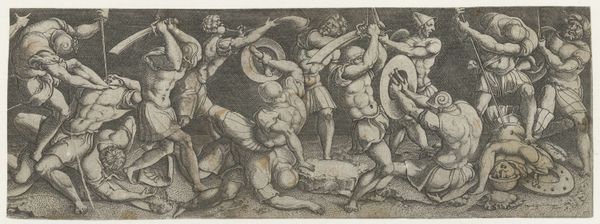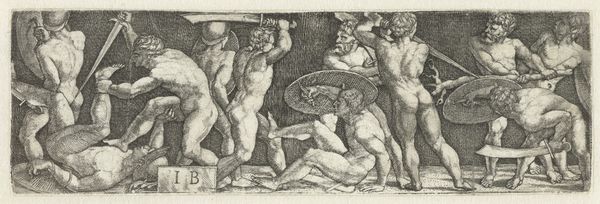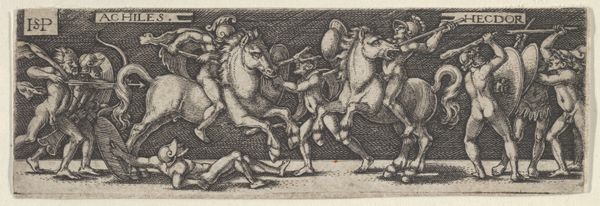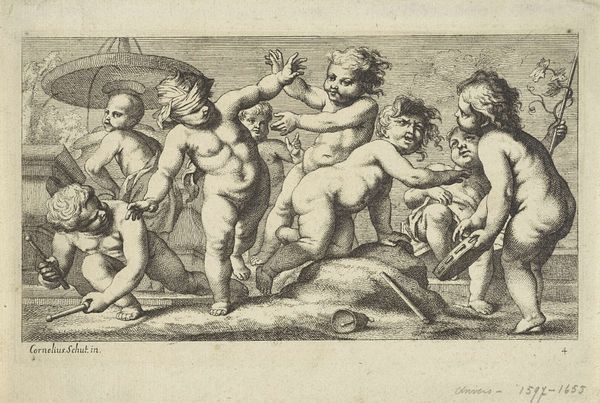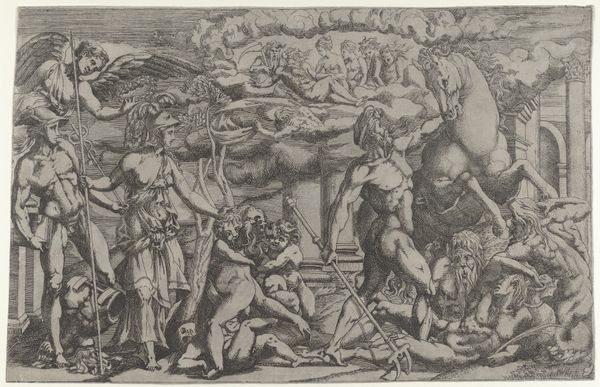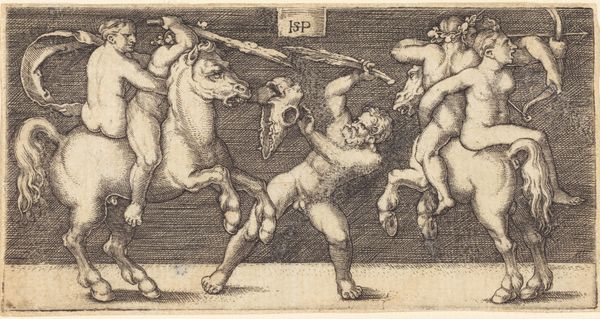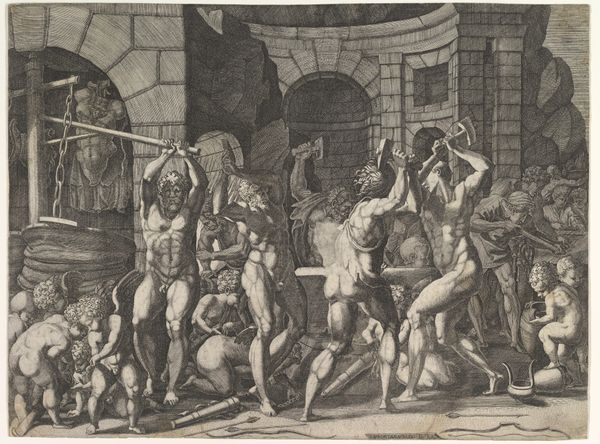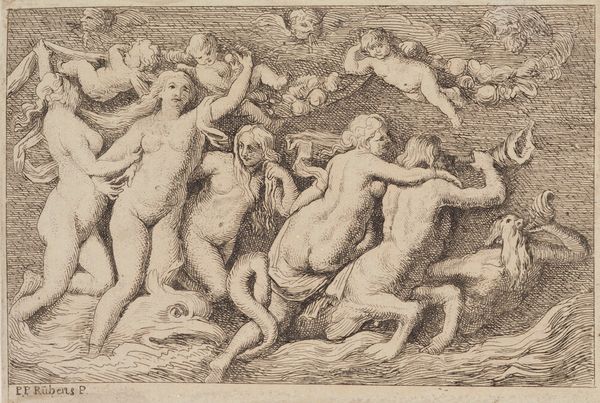
drawing, print, engraving
#
drawing
# print
#
figuration
#
form
#
11_renaissance
#
line
#
history-painting
#
northern-renaissance
#
engraving
Dimensions: Sheet: 1 1/8 x 3 1/4 in. (2.8 x 8.3 cm)
Copyright: Public Domain
Editor: Here we have Sebald Beham’s "Combat Between Greeks and Trojans," made between 1518 and 1530. It's an engraving, currently held at the Met. It's so densely packed with figures and action, it almost feels like a chaotic scene exploding out of the frame. As I observe, I’m wondering, how should we interpret this violent clash in its historical context? Curator: That’s a great question. We need to consider the public role that prints played in the 16th century. These weren't simply decorative; they were a key way to disseminate stories, ideologies, and, crucially, political narratives. Think of it as the early modern internet! Editor: So, you are saying it's beyond illustrating a scene? Curator: Precisely. Consider that these combats between Greeks and Trojans held immense cultural weight. They were foundational myths for many European societies, providing a lineage back to classical civilization. Beham's choice to depict it – and, more importantly, how he depicts it – speaks volumes. The intensity, the almost frantic energy you mentioned, could reflect contemporary anxieties about conflict and power, the political tension of the Holy Roman Empire, or, perhaps, anxieties regarding the reformation, don’t you agree? Editor: Yes! Now that I think about it, there's a level of anxiety I perceive with that dense chaotic scene. The lack of idealization too, I expected Renaissance art to portray such historical episodes with more… heroism? Curator: That's key! The “Northern Renaissance” style moved away from the classical ideals, and towards unflinching representations. Does that make you question Beham’s political leanings or social critique embedded within the work? Editor: Absolutely. It opens up the question of how artists in this period subtly negotiated potentially controversial subjects through historical or mythological narratives. I used to think engravings such as this just represented myths or scenes in the history, but in fact, there's socio-political context involved! Curator: Precisely, it reveals that these seemingly straightforward historical prints were actually complex interventions in the political and cultural landscape.
Comments
No comments
Be the first to comment and join the conversation on the ultimate creative platform.
